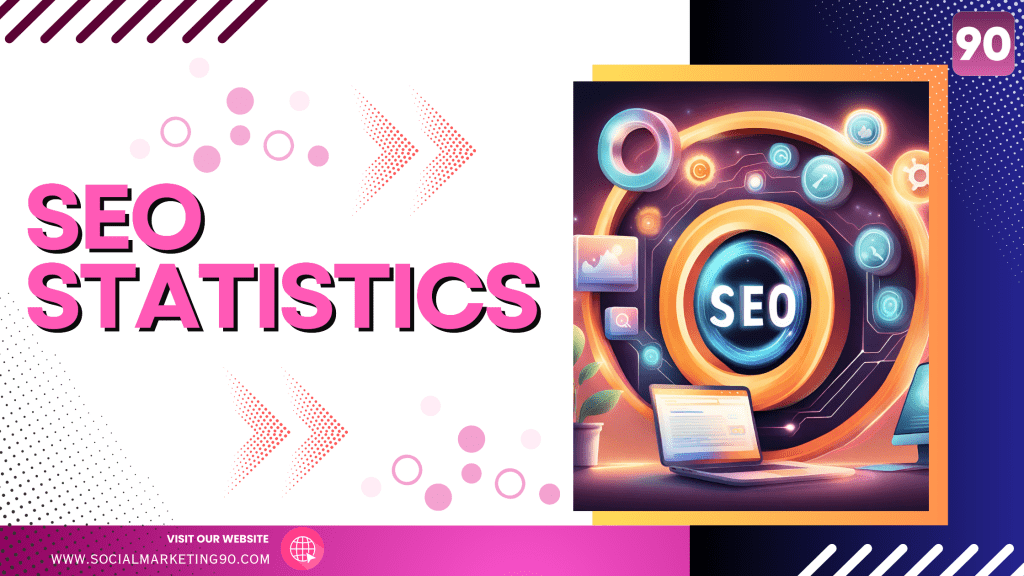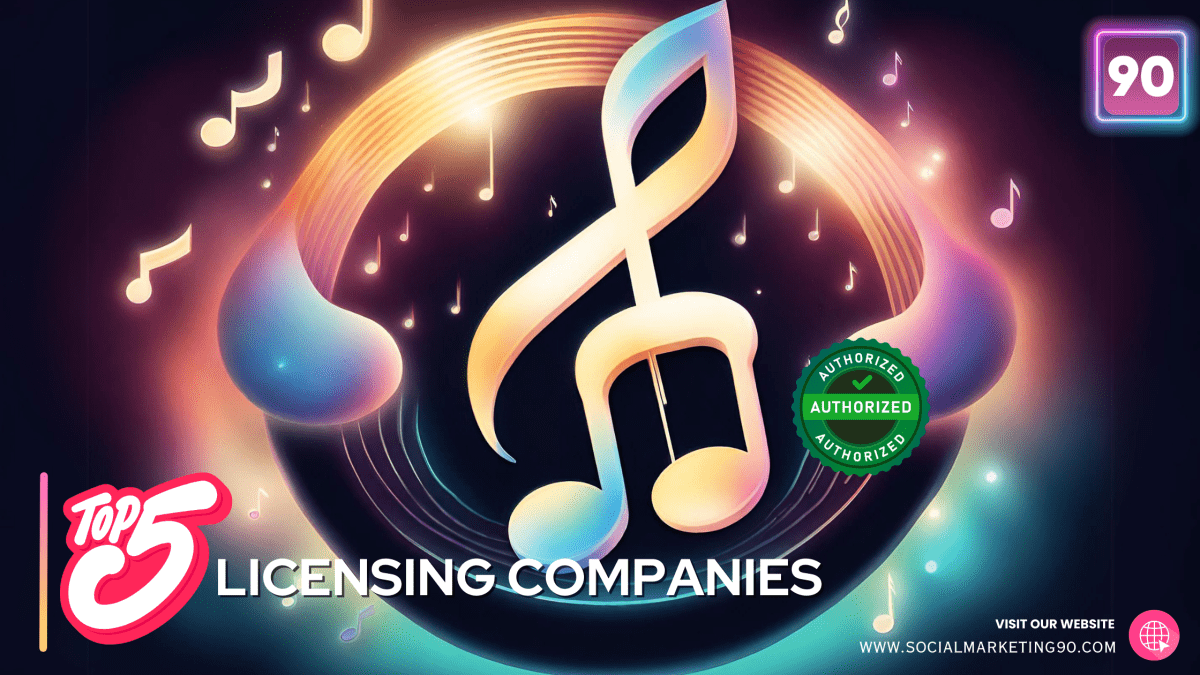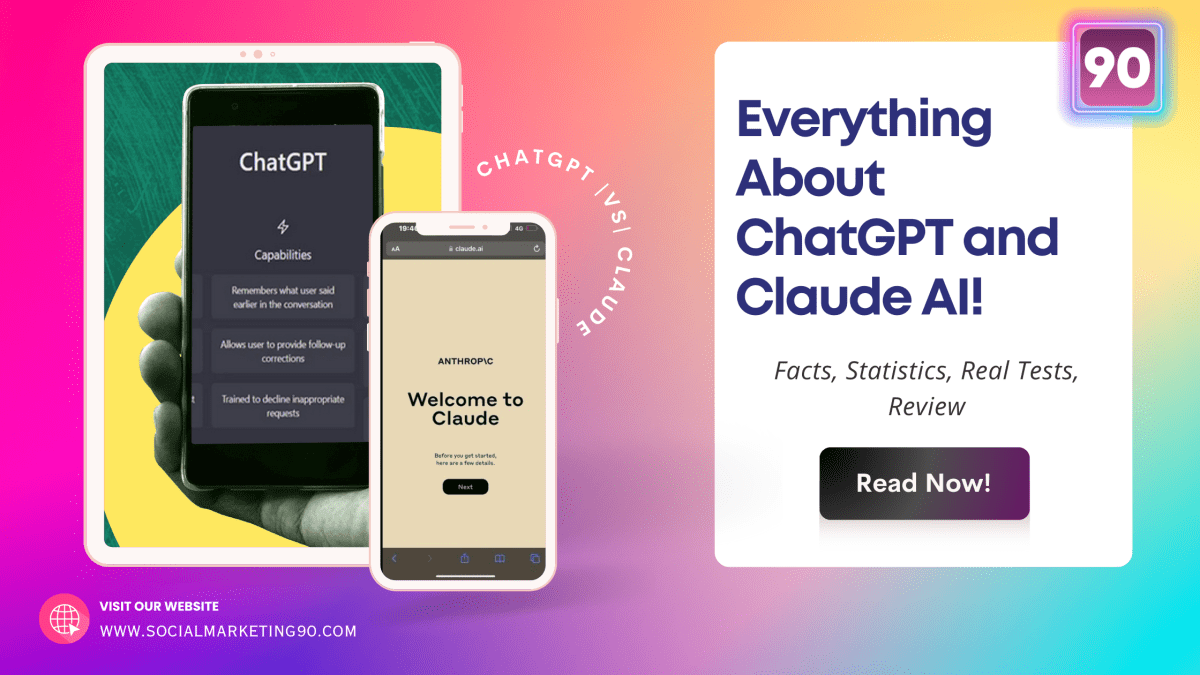Introduction
Need more organic search traffic? Here’s how you get it. Are you curious about the state of search engine optimization in the year 2024? We, too! So we did some research and came up with a list of SEO trends that will likely be popular in the next decade. At the end of the article, you will get an idea of how important is SEO for your business. These statistics are real, based on Google Trends data and our own experience.
Without any delay, here are the SEO statistics you are looking for! Before that, you must understand what SEO is and its importance!
What is SEO?

Search Engine Optimization (SEO) is the process of improving the visibility of websites or webpages in Search Engine’s results pages. This process helps users find relevant information faster by matching their search terms with the content on a website. The goal of SEO is to increase the number of visitors to a website from search engines like Google, Bing, Yahoo, etc.
Why is SEO Important?

If you’re reading this, then you probably already know why SEO is important for your business. But if you don’t, let us tell you, it’s because:
- It increases sales.
- It improves brand awareness.
- It makes your company visible online.
- It gives you a competitive advantage over other companies.
- It can help you gain new customers.
- It can improve customer retention.
- It can make your website more trustworthy.
- It can give you better rankings in search engines.
- It can make your site easier to navigate.
- It can boost your conversion rate.
- It can improve the user experience.
- It can reduce bounce rates.
Overview of SEO

With some broad search engine statistics, we’ll start this show on the road, then we’ll learn about Google search results, ranks, and more. Three intriguing SEO statistics to get you started:
- Links and content are the essential signals for Google.
The average click-thru rate for top 10 positions in google is only 3%, which means that less than one out of every ten people who type something into Google actually clicks through to the first page of results.
So, when you optimize your content, you should focus on making sure that your content is not just good enough but also compelling. You need to provide value to your readers. They should come back to read more of your content. And they should share your content as well.
- If you are looking for traffic to your content, then you must satisfy Google’s guidelines because Google is a top traffic referrer on the web, with 66% in the lead!
So, if you want to rank higher on Google, you have to follow its guidelines. If you do so, then you will be able to get more organic traffic and grow your business.
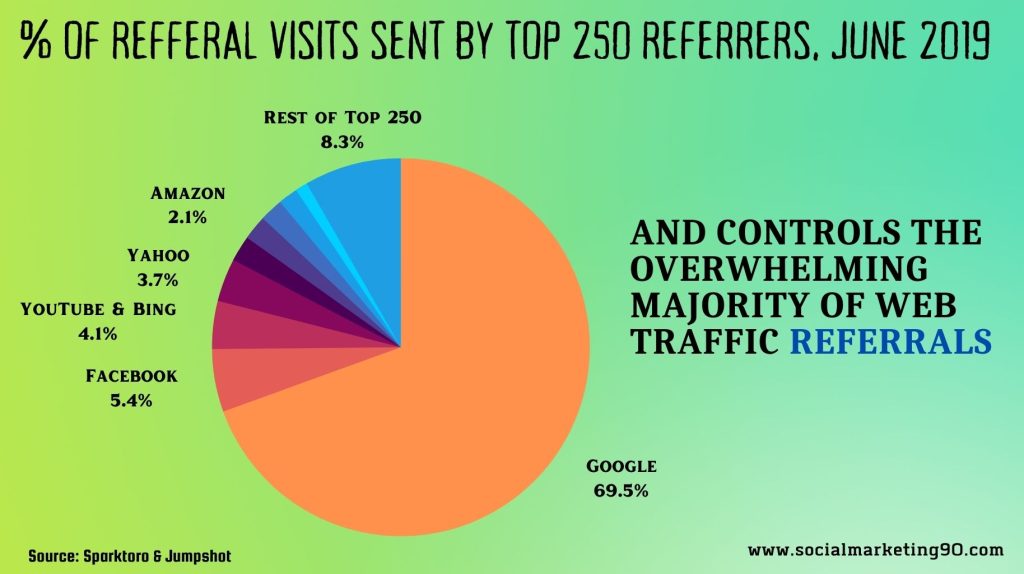
- Consider a 2019’s BrightEdge Report, around 68% of the Online users begin their first experience after getting the results from the search engine.
- As far as Backlinks are concerned, around 90% of all pages have no backlinks at all. Instead, the content ranking first has approximately 3.8 times of backlinks compared to the content ranked from 2 to 10. So, try to create quality content and build links naturally.
In order to increase your chances of ranking high on Google, you need to keep track of your competitors’ activities and use them to your advantage. Backlinks are one way of ranking on google; still, you can’t solely rely on backlinks! According to Ahrefs, a search engine optimization service, the average URL rating of a first-page Google result was 11.2 out of 100. This means that the best-performing sites were receiving an average of over 20 backlinks per page.
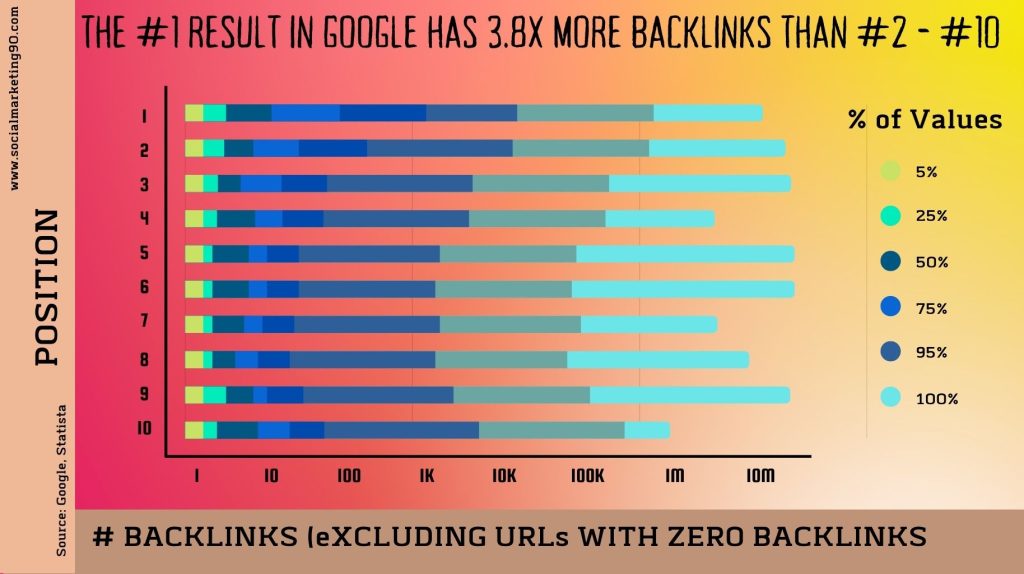
- There are many ways to find out what keywords your audience uses to find information online. One of the easiest ways is by using a keyword research tool like Nightwatch.
- When content parts are considered, according to the 2020 Google result, the average contents word count was 1447 words. Therefore, Long-form Content has more chance than shorter blogs to rank on the first page.
The most important thing is to ensure that you are creating unique content that has never been seen on the internet. When it comes to SEO, there are two types of keywords: long-tail keywords and head terms. Head terms are short phrases people type into search engines when searching for something specific.
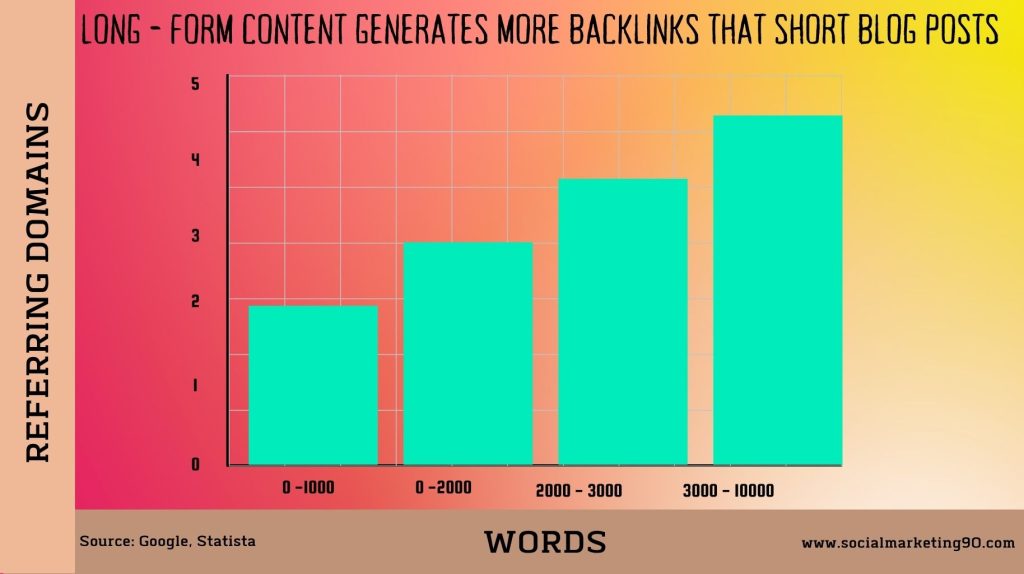
- The average time spent on Google’s first page is 2.5 minutes, which means higher the time, there is a chance to rank on the first page!
- But, if we look at the data from 2019, we see that the average time spent on Google’s first page is 1 minute, which means lower time and less chance to rank on the first or second page. So, try to create quality articles with good length (around 1000+ words), and do not forget to include some relevant images. In addition, don’t forget to add some videos too.
- The URLs that appear on the first page of Google search results are around 66 characters long. Shorter lengths, on the other hand, perform better. There is a 9.2 character difference between URLs that rank at the top and those that rank at the bottom.
Google CTR Statistics
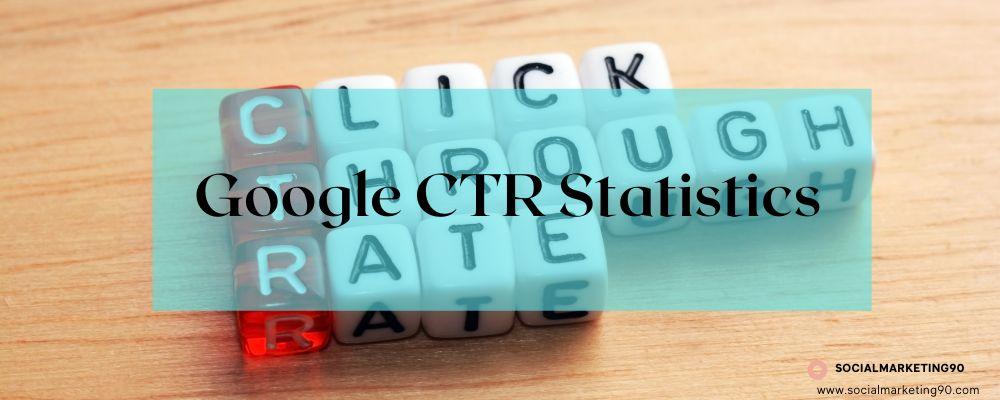
According to 2019’s Backlinko study of 5M Google Search Results,
- Google organic search for 1st ranked content has 31.7% of CTR, which is 10X more than the tenth-ranked content!
This means that the highest CTR content will dominate the first page of Google. The lowest CTR content is found on the 10th page of Google. Google organic search for 2nd ranked content has 19.4% of CTR, which is 3X more than the third-ranked content!
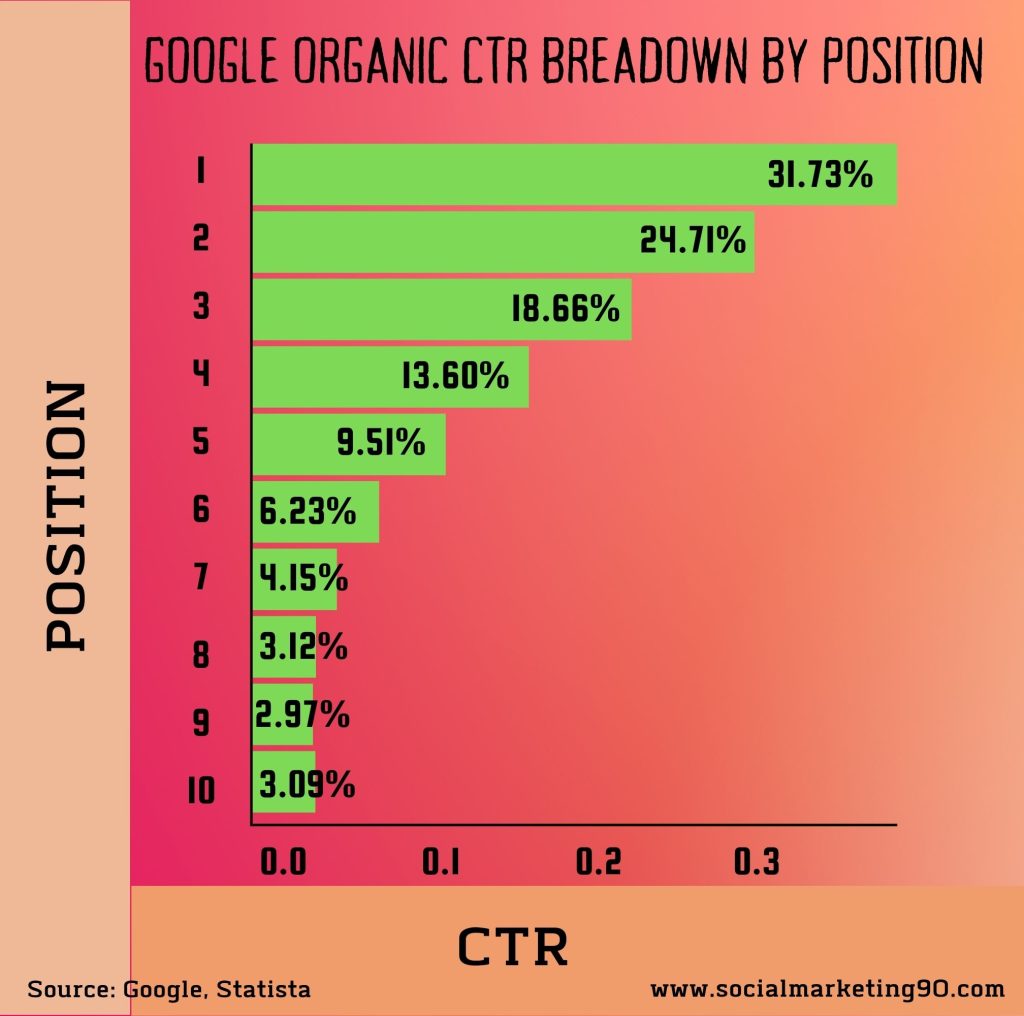
- If your content ranks top from the previously ranked position, the CTR will increase by 30.8%! So, you should always check your previous posts to improve the CTR.
- If your blog is new, then you must know that Google doesn’t give any priority to freshness. It gives priority to the authority of your site and its backlinks.
- Around 0.78% of users only click on the second page of the Google search engine! This means that if you want to get maximum traffic, you need to focus on getting your website listed on the first page of Google. If you can achieve this goal, then you will definitely get a massive number of visitors.
- If you have the targeted keyword on your URL, your page will get a higher CTR of around 45%, but if you don’t have a target keyword on your URL, your CTR will decrease to 15%.
- On the other hand, if you use the same keyword on many pages, then your CTR will also decrease.
- However, even if you adhere to all of the aforementioned recommended practices, you may not be able to get a high click-through rate.
- Almost two-thirds of the Google searches have not been clicked, according to the 2020 record!
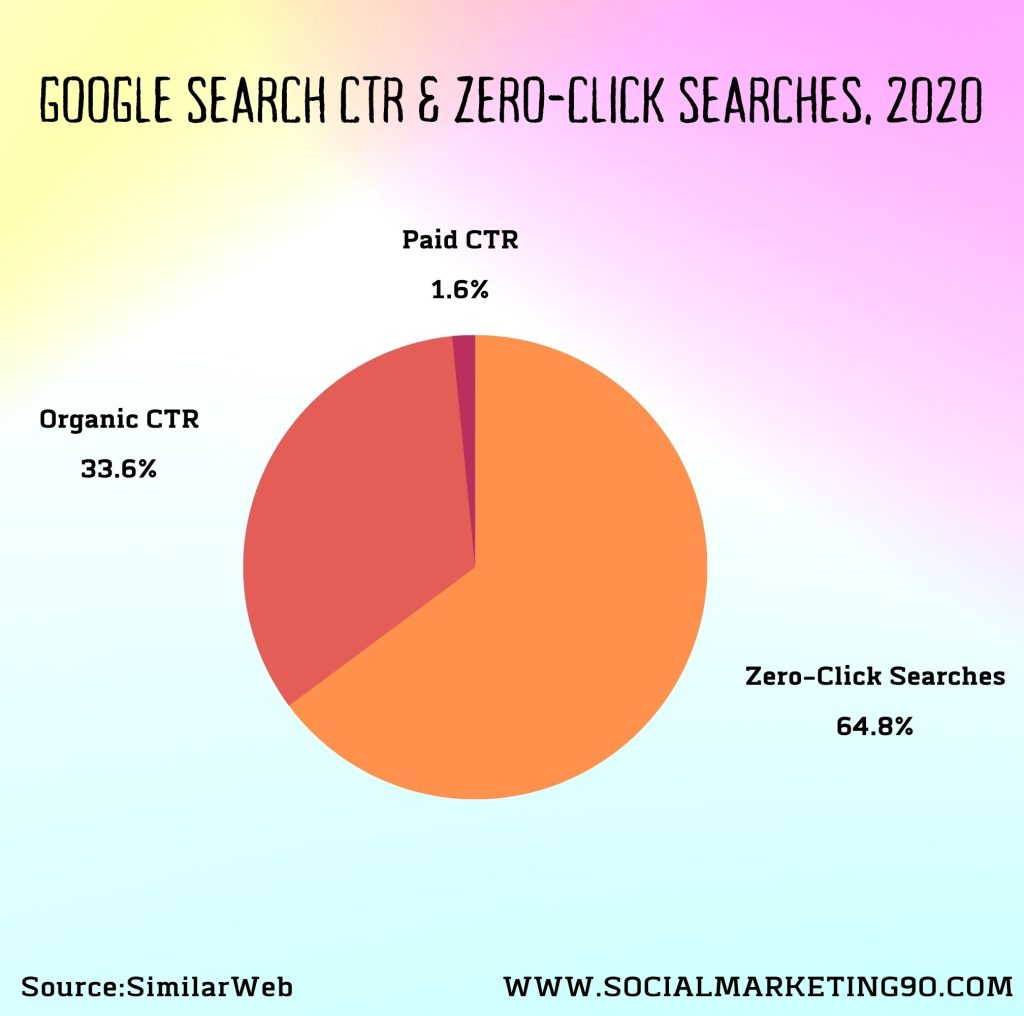
Title tag and meta description statistics

According to 2019’s Backlinko study of 5M Google Search Results,
- CTR is 8.6% higher for title tags within 15 and 40 characters compared to longer ones.
- If your heading has a question, then you can achieve a 14.1% higher CTR than other titles! Plus, if ‘Power words’ is added, your CTR might lower by 13.9%. On the other hand, if you have a sentimental or emotional title, then you have a chance of achieving a 7% higher CTR.
As per 2020’s Ahref’s study on meta description,
- Around 74.98% of top-ranking pages only have Meta-description, which means the remaining 30+ percent of pages missed the opportunity to rank on Google!
- Most meta descriptions are rewritten by Google around 62.78 percent of the time. Almost 65.2% of the long-tail keywords are rewritten than fat-headed ones!
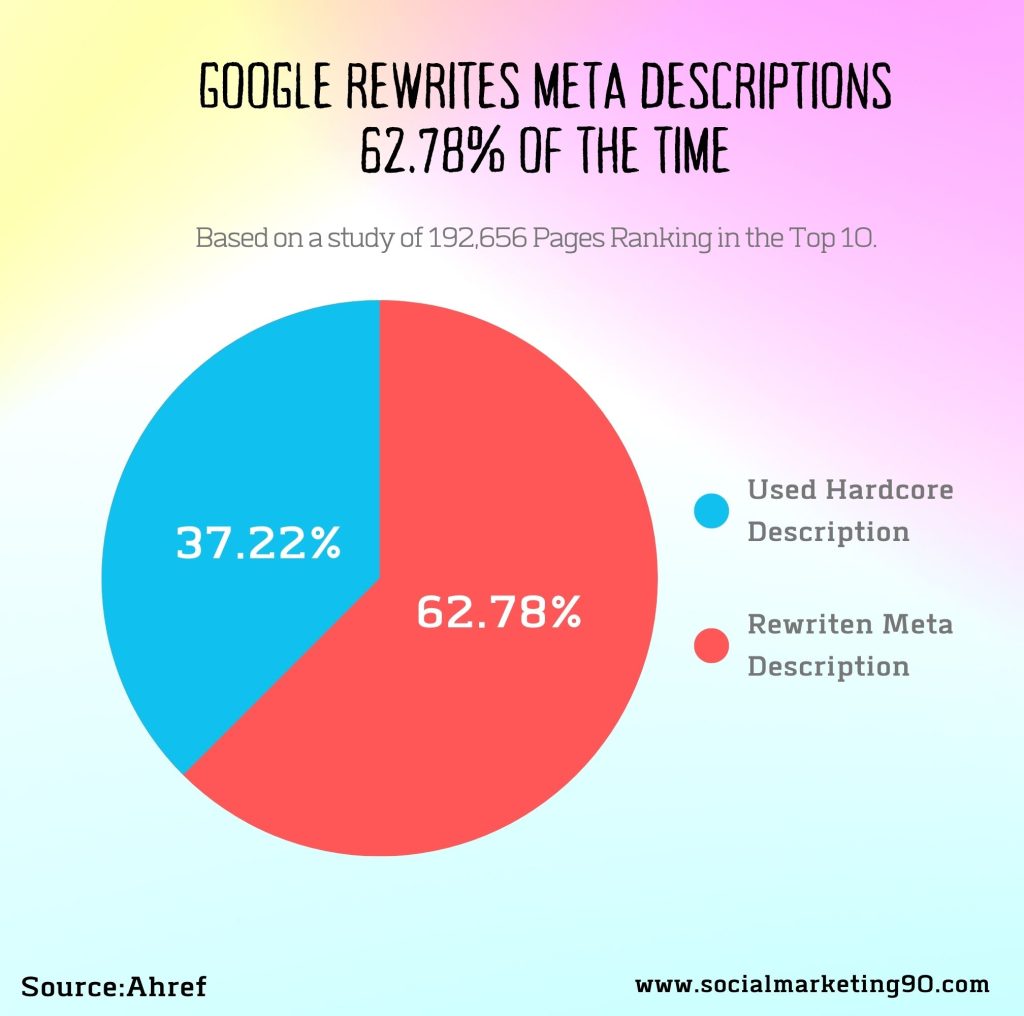
- There is no guarantee that your meta descriptions will not be changed if they fall within the set parameters of the search engine.
How long does it take a page to rank?

The average time taken for a page to rank on Google is about four months. However, there are some exceptions, such as:
- A page with a good domain authority (DA) score and a good quality link profile can rank faster.
- A page with a good DA score, a good quality link profile, and a good amount of unique content can rank faster.
- Pages with an excellent DA score, a great link profile, and a large amount of unique content can often rank much quicker.
- Pages with a low DA score, poor link profiles, and little unique content can sometimes take up to 6 months to rank.
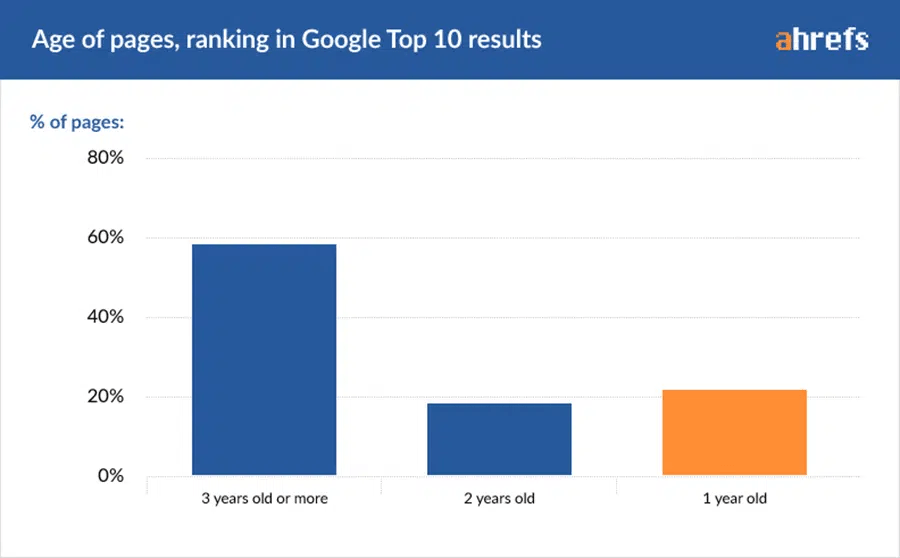
- A page that ranks on the first page has been around for at least two years on average. On average, those who are Rank 1st are almost 3+ years old.
- Only 22% of the top 10 pages are from the same year.
- So don’t mind link building’s extra time. Backlinks help establish your domain rating (DR) and the Ahrefs metric used to quantify a website’s authority (0-100).
Mobile SEO Statistics

Google now owns over 90% of mobile searches. In fact, Google has already surpassed desktop searches. So, optimizing your site for mobile devices is a good option. In addition, Google has stated that it will favor sites that offer a better user experience on mobile devices. In order to make sure that your site gets indexed on Google, you need to ensure that it complies with their guidelines. You must create a separate mobile version of your site so that users can access it easily. You can use responsive web design (RWD) to build a single HTML file that adapts to different screen sizes. This ensures that your site loads quickly regardless of what device someone uses to view it. You should also use a mobile-friendly URL structure.
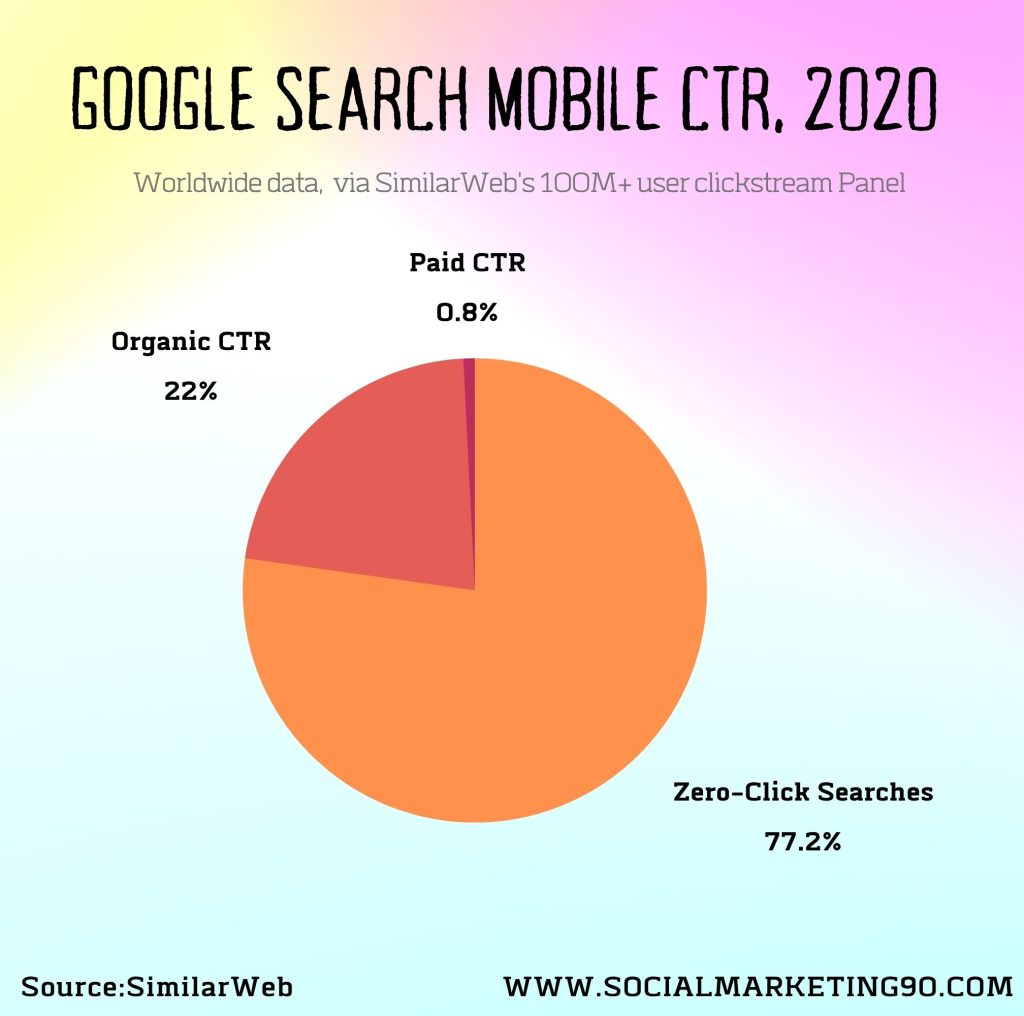
- In November 2021, Compared to desktop computers, mobile devices had a market share that is 55.42 percent, while desktop computers only accounted for 44.58 percent.
- According to StatCounter, in October 2019, mobile traffic accounted for 67.5 percent of all global internet usage.
- In 2020, mobile traffic surpasses desktop traffic. Mobile SEO statistics for 2020 show that mobile traffic increased by more than 50 percent compared to last year.
- As per Statista, in 2018, mobile traffic was growing at a rate of 56.3 percent, which is higher than desktop traffic growth of 46.1 percent. In 2019, mobile traffic grew at a rate of 58.4 percent, which is higher compared to desktop traffic growth of 42.6 percent.
- In 2020, according to eMarketer, mobile traffic will grow at a rate of 59.7 percent.
- One of the most popular apps is Google, which accounts for 93.87% of the Mobile Search Engine market in the USA in 2021.
- The number of smartphone users worldwide reached 2 billion in December 2016. By 2020, this figure reached 5 billion. Currently, in 2024, it’s 6.648 Billion which implies 83.72% of the global population.
Voice Search, Featured Snippet Statistics

Voice search is becoming increasingly important as people become more comfortable using voice technology. Voice search is expected to overtake text search within the next five years.
In 2020, about 8 billion smartphones in the world, which means that approximately 80% of the world’s population owns a smartphone. Aside, 70% of all searches are done via voice search. The number of voice searches performed each month is increased by 200 million globally.
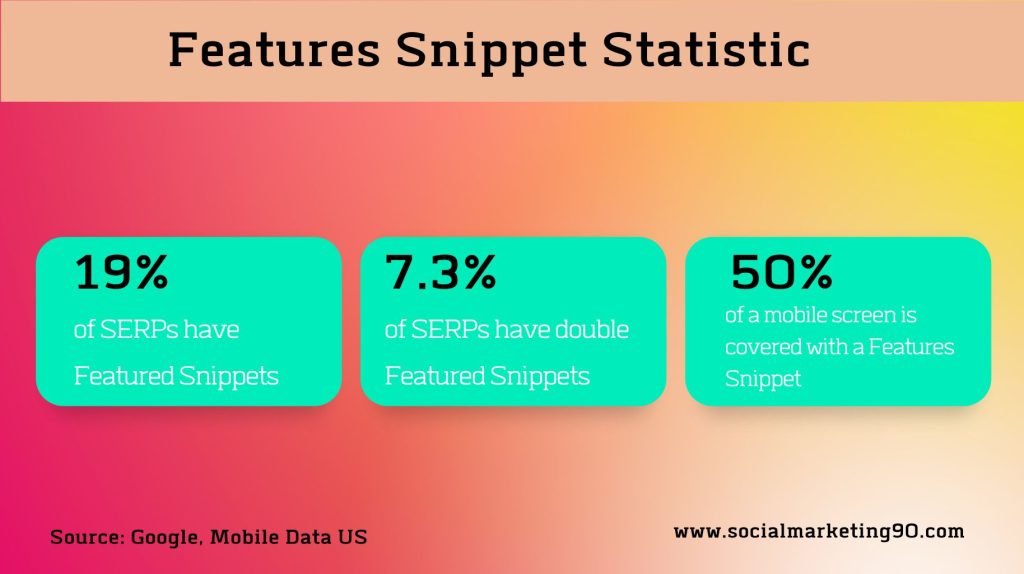
According to 2018’s Backlinko Voice SEO study states,
- Around 70.4% of the pages on Google Home are secured by HTTPS!
- Normally Voice search answers are approximately 29 words in length only.
- So, about 40.7% of the voice search are taken from a Featured snippet!
- If you want your content to rank on Google, then your content, especially Featured snippets, should be structured according to the Google guidelines, which are listed below,
- As mentioned before, your content should be in long-form, i.e.) your content should have 1400+ Words
- Make structured data
- Typical heading counts for the content are around 14 headings which compromise H1, H2, and H3 so that google can crawl accordingly.
- Finally, add Images to your content; about 8 images are a minimal requirement for 1400-length content. Remember to add Alt-tags.
FAQs

Is SEO a dying industry?
No, not at all. It has always been an evolving field with new trends coming up every day. But one thing is certain: SEO is here to stay.
How much does it cost to get started with SEO?
There is no fixed price for getting started with SEO. However, the average cost of starting an SEO campaign ranges between $500-$1500. This includes hiring an expert team, creating high-quality content, optimizing websites, etc.
Does SEO suitable for small companies?
Yes, SEO is suitable for any type of business. You can still start an SEO campaign even if you have a small budget. All you need is a good strategy and some patience.
Is SEO important for every business?
It depends on what kind of business you run. If you sell products or services online, then yes, SEO is essential. You must optimize your website, so customers find you easily when searching.
What is the difference between SEO and SEM?
Search engine optimization (SEO) refers to improving a web page’s visibility in organic search results. On the other hand, pay-per-click advertising (PPC), also known as paid search marketing, is considered a form of Internet marketing because the advertiser pays to have their ads appear when specific keywords are searched.
Final Thoughts

SEO is an essential part of digital marketing. It helps to reach out to the target audience with the help of keywords. So, if you are planning to do digital marketing, then make sure to include SEO in your plan. We hope you find this article useful. If you have any questions or comments, please feel free to leave them below. We would love to hear from you. Thank you for reading our post.
| Sources | ||
|---|---|---|
| SmiliarWeb | Sparktoro | Statista |
| Mobile Data US | Ahref |

